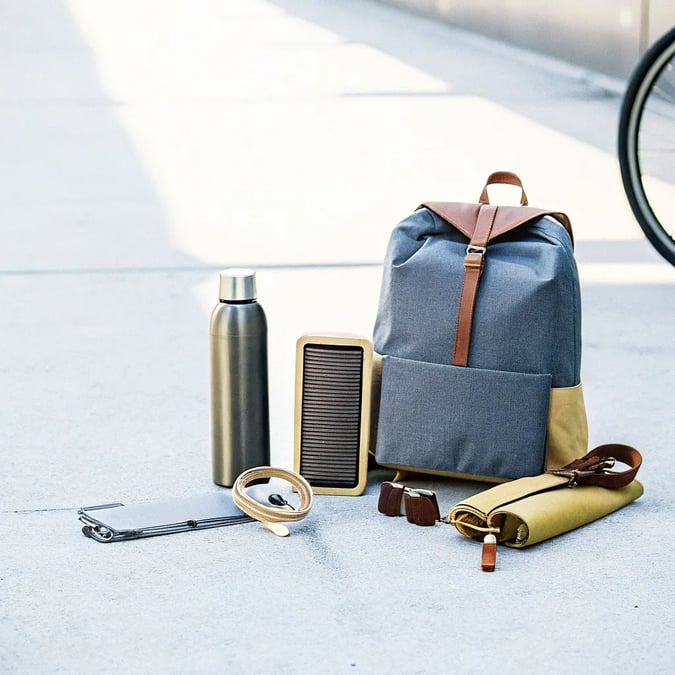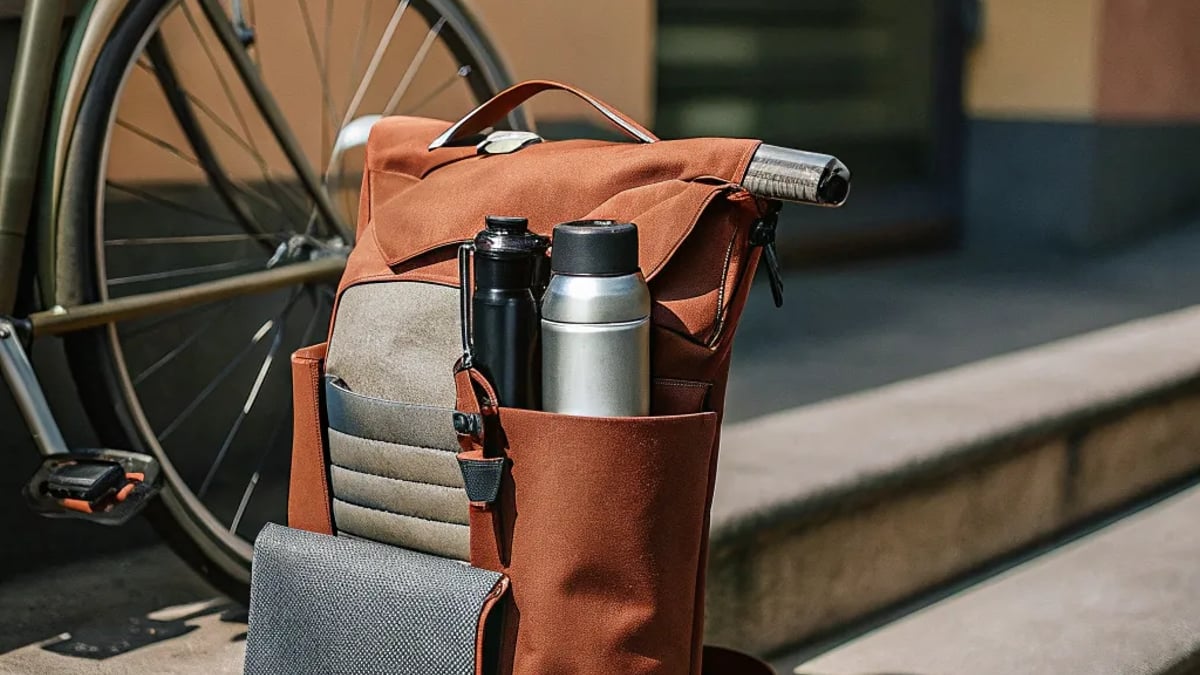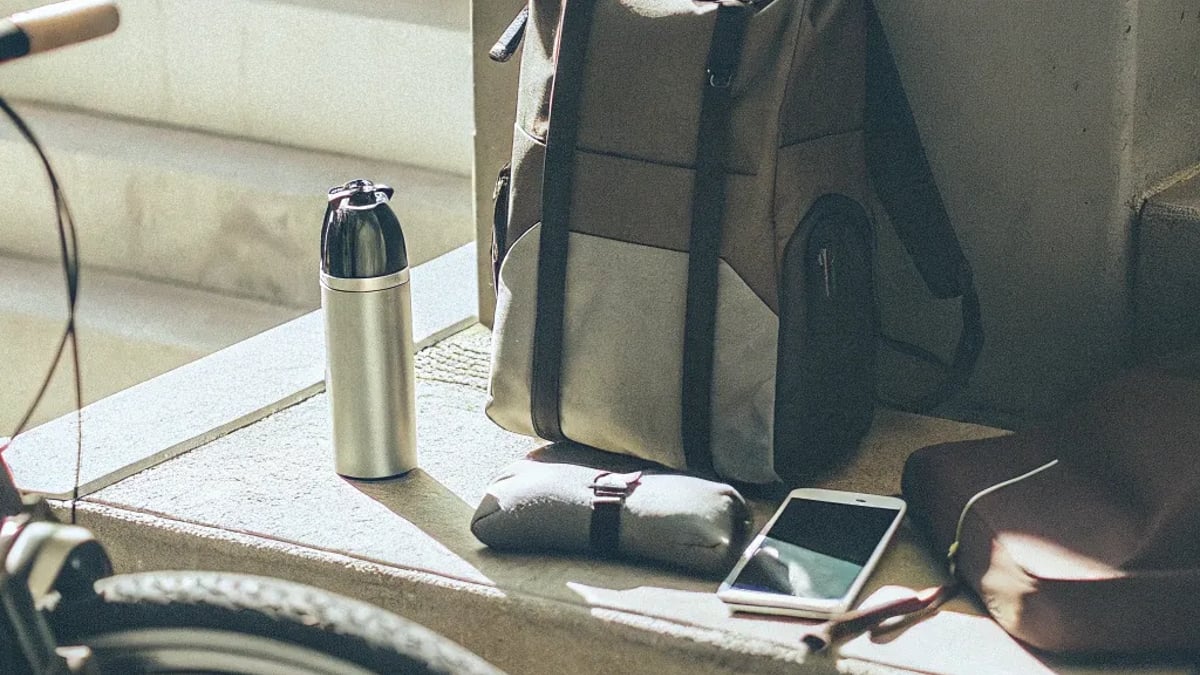
Switching to bike commuting isn't just good for your health—it's a meaningful step toward reducing your carbon footprint. But creating a truly sustainable bike commuting practice goes beyond just pedaling instead of driving. The gear, maintenance supplies, and daily habits you choose can either amplify or diminish your environmental impact. This guide will help you build a low-waste bike commuting kit that aligns with both your practical needs and environmental values.
Why Low-Waste Bike Commuting Matters
The environmental benefits of biking are well-documented. According to a report from the Bike League, improved bicycle infrastructure paired with a Safe System Approach to roadways can significantly reduce emissions while making communities more livable. But the environmental impact of cycling extends beyond just reducing car trips.
Many cycling products—from packaging to the items themselves—contribute to waste streams. Disposable cleaning wipes, single-use water bottles, and frequently replaced cheap accessories all add up over time. A thoughtful approach to your commuting kit can minimize this waste while actually improving your commuting experience.
Stanford University's sustainability initiatives highlight this connection. In their 2023 Sustainability Year in Review, they note that their bike-friendly campus policies contributed to a record-low 36% drive-alone rate for commuting. Their Zero Waste Building System shows how comprehensive approaches to waste reduction can be applied to transportation systems too.

Essential Components of a Low-Waste Commuting Kit
Durable, Repairable Bags and Storage
When it comes to carrying your stuff, the panniers vs. backpack debate isn't just about comfort—it's about longevity and repairability.
Panniers offer several advantages for a low-waste approach:
- They transfer weight to your bike rather than your body
- Quality panniers last for years or even decades
- Many have replaceable parts like mounting hardware
- They don't cause back sweat, reducing the need for shower alternatives
A discussion on Reddit's r/cycling community highlights that while backpacks are more versatile off the bike, panniers provide better weight distribution and reduce sweating. For truly low-waste commuting, look for:
- Panniers made from durable, repairable materials like waxed canvas or heavy-duty cordura
- Bags with replaceable parts rather than glued construction
- Companies that offer repair services
- Secondhand options from quality brands

Sustainable Personal Care Solutions
One of the biggest challenges for bike commuters is freshening up after a ride. A Reddit thread in r/bikecommuting reveals that many commuters rely on disposable wipes, creating unnecessary waste.
Low-waste alternatives include:
- Reusable cloth wipes with a small spray bottle of witch hazel or diluted castile soap
- A small microfiber towel and bar soap in a tin container
- Bamboo-based washcloths that biodegrade better than synthetic options
- Refillable deodorant in sustainable packaging
One commuter shared: "I keep a spray bottle with diluted Dr. Bronner's soap and a few small cotton towels. Bonus is there is no baby wipe waste and I don't smell like a baby! Works great for my 15-mile Florida commute where showers aren't available."
Repairable Bike Tools and Maintenance
Bike maintenance can generate significant waste through disposable parts and single-use cleaning products. A low-waste approach includes:
- A quality multi-tool with replaceable components
- Refillable chain lube bottles
- Reusable, washable rags instead of disposable wipes
- Bulk cleaning solutions in your own containers
- Learning basic repair skills to extend the life of components
Durable Clothing and Visibility Gear
Fast fashion cycling gear often wears out quickly and can't be repaired. Instead:
- Invest in higher-quality base layers that last for years
- Choose natural fibers like merino wool that require less frequent washing
- Look for companies that offer repair services for their gear
- Consider reflective add-ons for regular clothing rather than specialized visibility clothing
How to Handle Food and Hydration Sustainably
Nutrition is crucial for bike commuters, but it's also an area where convenience often leads to waste.
Water Systems
- A frame-mounted stainless steel or aluminum bottle eliminates plastic waste
- Insulated bottles keep water cool in summer and prevent freezing in winter
- Consider bottles with replaceable components like caps and valves
Snacks and Meals
- Bulk-purchased nuts and dried fruits in reusable containers
- Homemade energy bars wrapped in beeswax wraps
- Reusable silicone food pouches for more liquid snacks
Creating a Low-Waste Commuting Routine
The University of Illinois Chicago's sustainability page on biking offers helpful tips for commuting by bike that can be adapted for low-waste practices:
- Plan your route to minimize stops and starts, which reduces wear on components
- Register your bike with local programs to increase recovery chances if stolen, avoiding the waste of replacement
- Establish a maintenance schedule to catch issues before they require major part replacements
Simple Daily Habits That Reduce Waste
- Keep a repair kit at work to fix minor issues immediately
- Store a set of work clothes at your workplace to reduce daily transport needs
- Use digital maps instead of printed ones
- Maintain proper tire pressure to reduce unnecessary tire wear
What About Bike Sharing?
For those unable to maintain their own bike, services like Divvy (mentioned in the UIC resource) offer an interesting middle ground. While not completely waste-free, shared bikes distribute the environmental impact of manufacturing across many users.
Consider:
- Is the bike share program well-maintained, ensuring long component life?
- Do they have sustainable end-of-life plans for bikes and parts?
- Does using bike share reduce your need for other high-waste transportation options?
How Do I Know If My Bike Commuting Kit Is Truly Low-Waste?
Ask yourself these questions:
- Can I repair rather than replace most items?
- Am I generating daily disposable waste?
- Are my choices durable enough to last for years?
- Have I eliminated single-use plastics from my routine?
Balancing Practicality and Sustainability
Building a perfect zero-waste commuting kit isn't realistic for most people. The goal should be progress, not perfection. Sometimes a synthetic jersey makes more sense than natural fibers for your climate, or you might need to use disposable options occasionally.
Start by tackling your highest-waste items first. If you use disposable wipes daily, finding a reusable alternative will have more impact than obsessing over the material of your bike bell.
Remember that extending the life of what you already own is often more sustainable than buying new "eco-friendly" products. Repair, repurpose, and reimagine before replacing.
Disclaimer: This content is for informational purposes only and not a substitute for professional advice regarding health, fitness, or environmental impact. Always consult appropriate professionals before making significant changes to your commuting routine, especially if you have existing health conditions.
Tags

About Elliott Greenway the Author
Elliott Greenway is a seasoned environmentalist and avid cyclist with over a decade of experience promoting sustainable transport solutions. His expertise in eco-friendly cycling has inspired countless individuals to take up cycling as a means to reduce their carbon footprint and embrace a healthier lifestyle.
Recommended Articles
US Innovations That Are Shaping the Future of Everyday Life
Explore how U.S. innovations in smart homes and AI are revolutionizing everyday life, enhancing convenience, and promoting sustainability.
How to Make an Older Car Smell Fresh Again According to Mechanics
Learn simple tips from mechanics to make your older car smell fresh again, from upholstery cleaning to natural deodorizing methods.
2025 Toyota Crown Delivers Hybrid Luxury With Unexpected Power
Discover the 2025 Toyota Crown, a luxurious hybrid sedan offering impressive performance, comfort, and cutting-edge technology for a unique driving experience.
2026 Volkswagen Tiguan Arrives With More Space and Style
Discover the 2026 Volkswagen Tiguan, featuring expanded space, modern tech, and stylish updates perfect for families on the go.
Top Cloud Storage Services for Safer, Smarter Backup
Discover top cloud storage services in 2025 for safer backups, featuring options like OneDrive, Google Drive, and more for secure and easy access.




